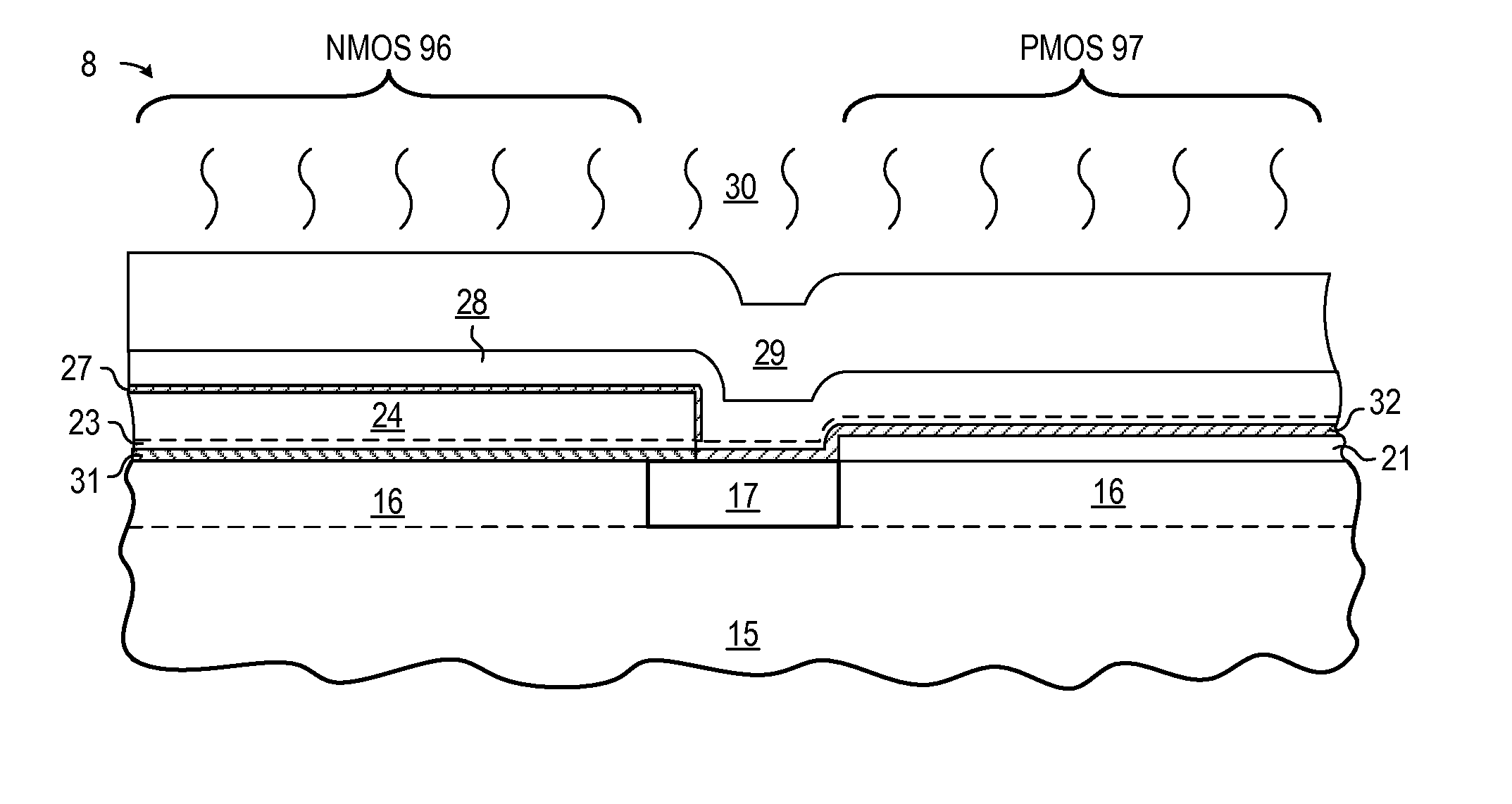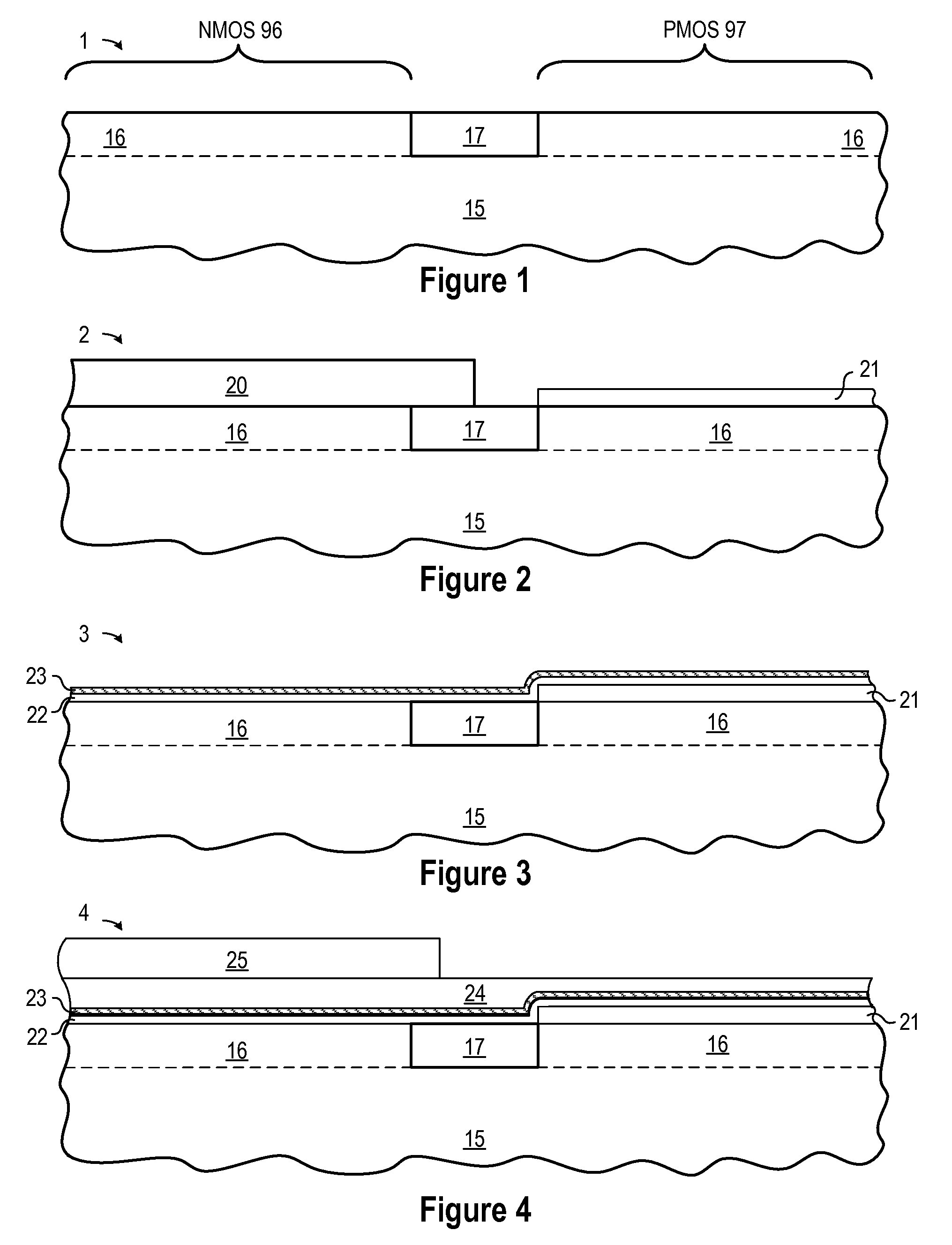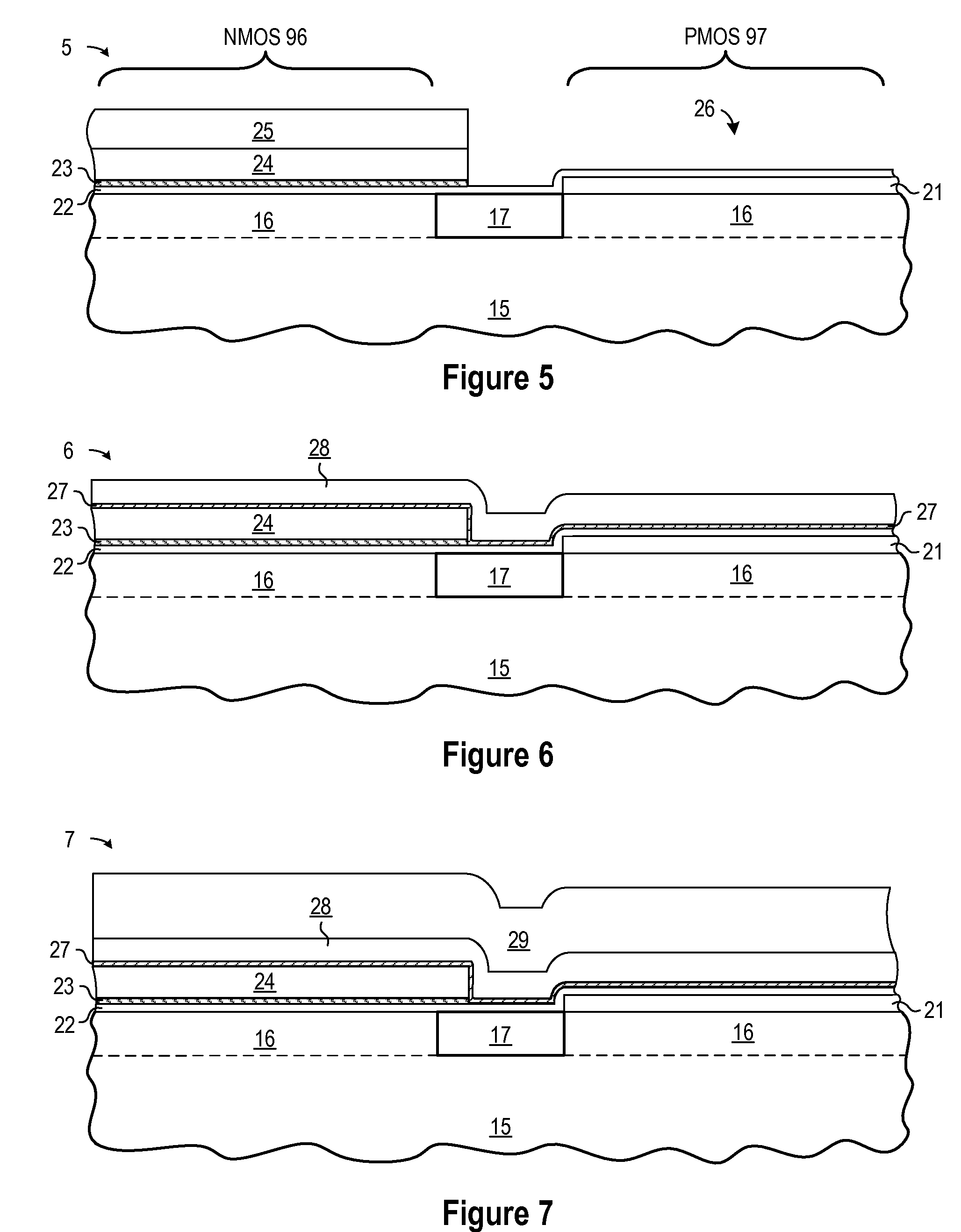CMOS integration with metal gate and doped high-K oxides
a technology of metal gate and oxide, applied in the field of metal gate electrode fabrication, can solve the problems of reducing the size and scaling of the semiconductor device technology, reducing the scaling of the gate oxide thickness in the conventional mos transistor, and ignoring the aspects of device design and fabrication that previously gave rise to only second-order effects in long-channel devices
- Summary
- Abstract
- Description
- Claims
- Application Information
AI Technical Summary
Benefits of technology
Problems solved by technology
Method used
Image
Examples
Embodiment Construction
[0022]A method and apparatus are described for fabricating NMOS and PMOS transistors where each transistor includes a metal gate and a high-k gate dielectric that is doped with a species to shift the voltage threshold appropriately for the NMOS or PMOS device type. By forming separate NMOS and PMOS oxide capping layers on the high-k gate dielectric layer (e.g., hafnium dioxide) using a single patterned resist layer that is separated from the high-k gate dielectric layer by at least a first metal-based layer, the disclosed CMOS fabrication process provides separately doped gate dielectric layer while avoiding the problems created by putting resist in direct contact with the high-k gate dielectric layer. In addition, the disclosed integration scheme allows for resist rework, and results in the formation of a metal gate and high-k gate dielectric gate electrodes having substantially equal gate stack heights for the NMOS and PMOS devices. In an example process flow, a semiconductor wafe...
PUM
 Login to View More
Login to View More Abstract
Description
Claims
Application Information
 Login to View More
Login to View More - R&D
- Intellectual Property
- Life Sciences
- Materials
- Tech Scout
- Unparalleled Data Quality
- Higher Quality Content
- 60% Fewer Hallucinations
Browse by: Latest US Patents, China's latest patents, Technical Efficacy Thesaurus, Application Domain, Technology Topic, Popular Technical Reports.
© 2025 PatSnap. All rights reserved.Legal|Privacy policy|Modern Slavery Act Transparency Statement|Sitemap|About US| Contact US: help@patsnap.com



